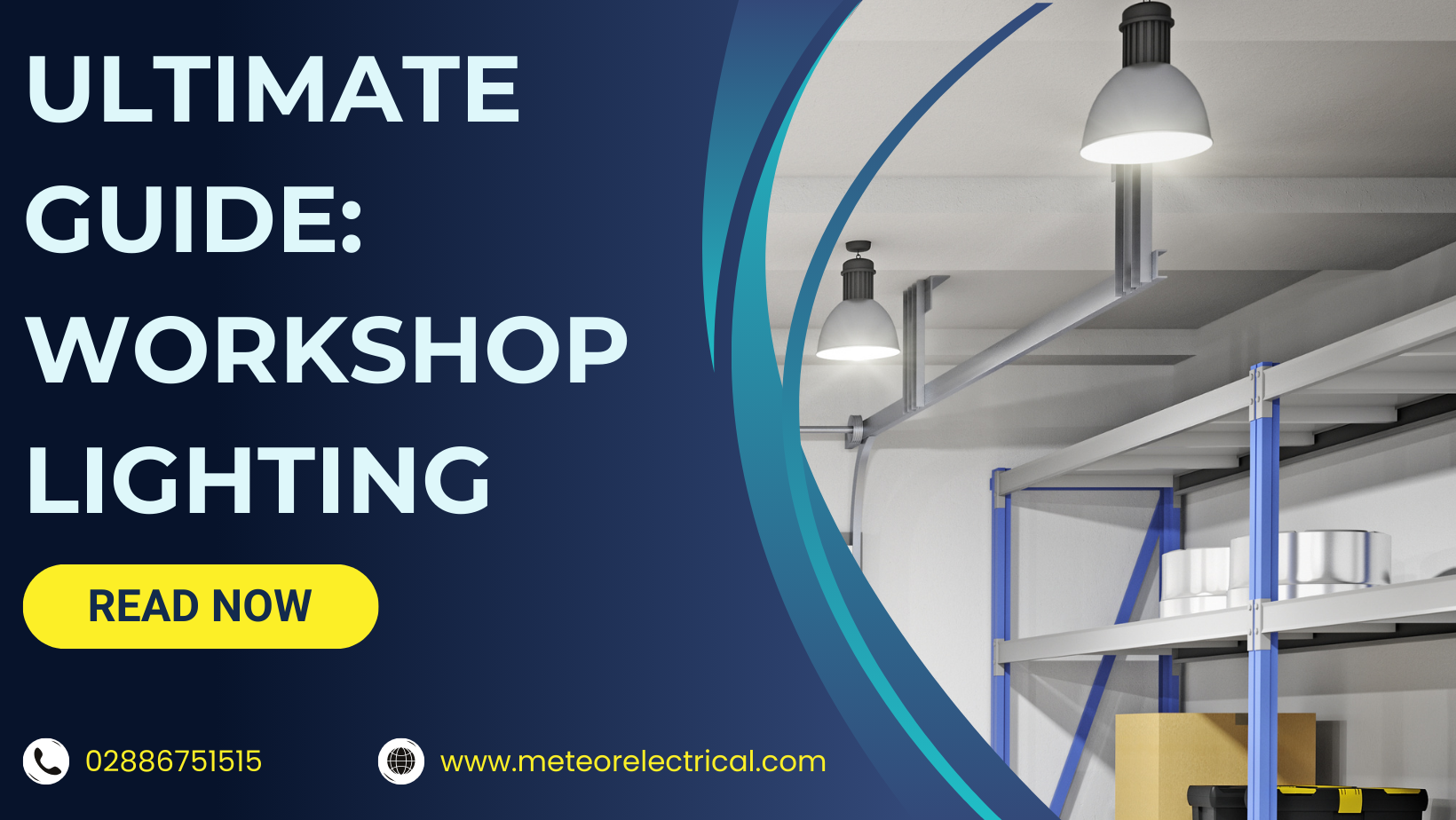Brighten Up Your Workspace: The Ultimate Guide to LED Workshop Lighting

Transforming your workshop into a haven of productivity and safety starts with the right lighting. Good lighting design in workshops is not just about visibility—it's about enhancing work quality, boosting productivity, and ensuring employee safety. This guide will help you navigate the essentials of workshop LED lighting, making your workspace more efficient and safe. Discover how Meteor Electrical's LED lighting solutions can revolutionise your workspace and why they are the best choice for any workshop environment.
What Is Workshop Lighting?
Workshop lighting is a critical element in any workspace, ensuring smooth workflows, fostering creativity, and enhancing safety. Proper lighting promotes better visibility, reduces workplace hazards, and optimises product storage. Energy-efficient LED lights can significantly elevate your workshop's efficiency and safety standards (Energy.gov).
Why Is Good Workshop Lighting Important?
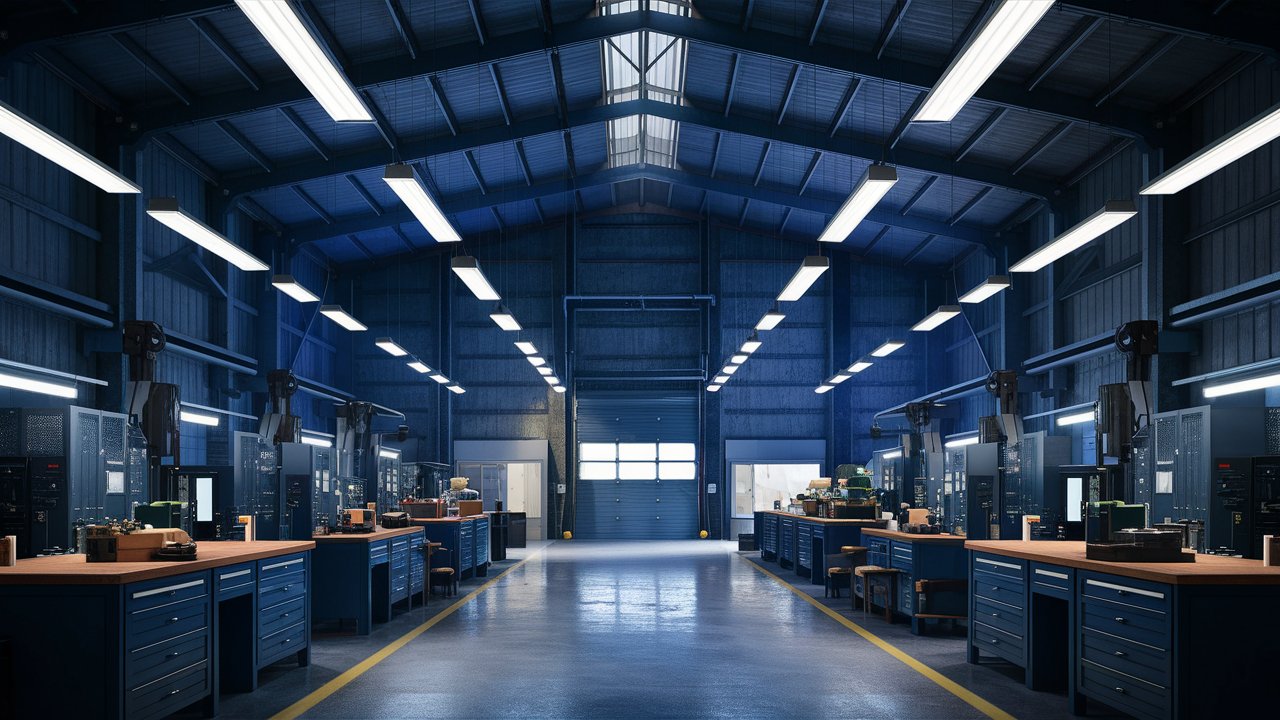
Efficient lighting solutions are crucial for smooth workshop operations, directly impacting productivity and safety. Poor lighting can lead to hazards and declining work quality. Here are the key benefits of investing in proper workshop lights:
- Improved Work Visibility Levels: Workshops often have high shelves and narrow corridors, requiring light fixtures that provide better visibility. LED workshop lighting with a narrow light beam angle can illuminate important areas, enhancing the work experience (HSE).
- Reduced Work Incidents and Accidents: Proper illumination is vital for reducing accidents, especially with heavy machinery present. Effective lighting enables operators to work safely without risking damage to property or injury to themselves or others (NEBOSH).
- Decreased Production and Employee Mistakes: Good lighting, such as workshop LED lights, eliminates dimly lit spots, reducing strain on employees' eyesight. Enhanced visibility leads to fewer mistakes and improved work accuracy (HSE).
- Minimised Employee Fatigue: Adequate illumination levels in workshops reduce employee lethargy during midday hours. Proper lighting ensures workers remain alert and productive throughout their shifts (CIBSE).
- Lower Operating Costs: LED workshop lighting is highly efficient, minimising energy wastage compared to incandescent and fluorescent lamps. By adopting LED lighting, workshops can keep energy costs low without compromising on illumination quality. LED workshop lights are also cool to the touch and do not produce heat energy, unlike traditional luminaires. This heat energy can become an even bigger strain on your energy bills; therefore, switching to LEDs is much more cost-effective for workshop purposes (Energy.gov).
Types of Bulbs Used in Workshop Lighting

Understanding the different types of bulbs used in workshop lighting can help you make an informed decision. Here’s a closer look at the most commonly used types:
Metal Halide Bulbs
Metal halide bulbs have been a popular choice for workshop lighting due to their high-intensity discharge. These bulbs produce a bright, white light that is suitable for large areas.
Pros:
- Bright, white light
- Suitable for large areas
Cons:
- High energy consumption
- Significant light depreciation over time
- Require a warm-up period to reach full brightness
- It can get very hot, posing a potential fire risk (LightingEurope)
Fluorescent Bulbs
Fluorescent bulbs are more energy-efficient than metal halide bulbs and are available in various colour temperatures and shapes. They provide even, diffuse light that is ideal for workspaces where consistent lighting is required.
Pros:
- Energy-efficient
- Available in various colour temperatures and shapes
- Provide even, diffuse light
Cons:
- Contain mercury, posing environmental and health risks if broken or improperly disposed of
- Tend to flicker, causing eye strain over prolonged periods of use (EPA)
LED Bulbs
LED bulbs are the most efficient and versatile option for workshop lighting. They consume significantly less energy than both metal halide and fluorescent bulbs while providing superior illumination.
Pros:
- Extremely energy-efficient
- Long lifespan, often lasting up to 50,000 hours or more
- Provide immediate full brightness without a warm-up period
- Perform well in various temperatures, including very cold environments
- Environmentally friendly as they do not contain toxic materials like mercury
- Durable and less likely to be damaged (EnergyStar.gov)
Cons:
- Higher initial cost compared to other bulbs
How Do LEDs Perform Compared to Traditional Lights?
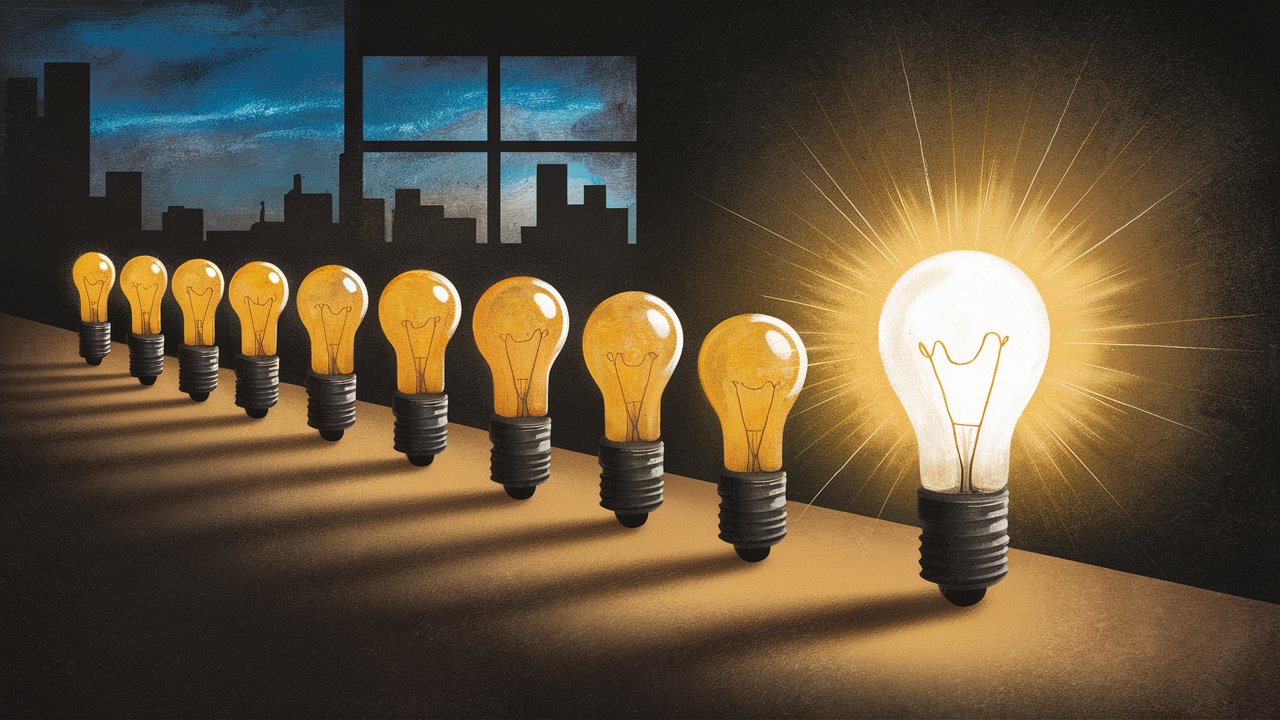
Switching to LED workshop lighting offers numerous advantages over traditional lighting modes:
LED vs. Metal Halide Lamps
- Efficiency and Brightness: LEDs provide better illumination with lower energy consumption (IES).
- Technology: LEDs use solid-state semiconductors, making them more durable and efficient (CNET).
- Warm-Up and Cool-Down: LEDs offer instant full brightness without delays (LightingEurope).
- Maintenance and Safety: LEDs have a longer lifespan, reducing the need for frequent replacements and minimising risks (HSE).
- Energy Costs: LEDs lower long-term energy costs compared to metal halide lamps (EnergyStar.gov).
LED vs. Fluorescent Lamps
- Energy Efficiency and Lifespan: LEDs use less energy and last longer (Energy.gov).
- Brightness and Color Rendering: LEDs offer better colour rendering and a wider range of temperatures (IES).
- Environmental Impact: LEDs are free of toxic materials like mercury (EPA).
- Operation in Extreme Temperatures: LEDs perform well in cold temperatures and frequent on/off cycles (CIBSE).
- Upfront and Long-Term Costs: LEDs, though initially costlier, are more cost-effective over time due to their efficiency and longevity (EnergyStar.gov).
Choosing the right type of bulb for your workshop lighting needs depends on various factors, including energy efficiency, maintenance, safety, and environmental impact. However, with advancements in technology, LED bulbs have become the preferred choice for many workshop environments due to their numerous benefits and superior performance.
Learn more about LEDs here!
Types of LED Workshop Light Fixtures
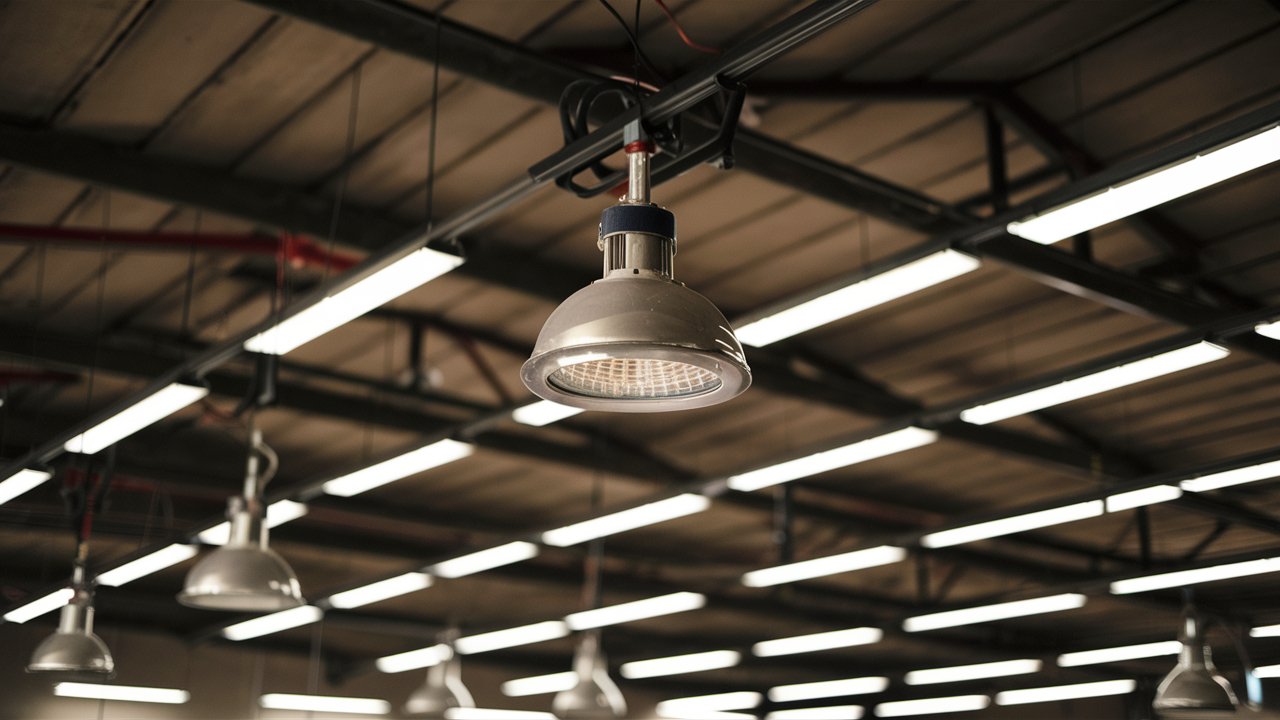
LED workshop lighting comes in various designs, each tailored to meet different needs. Let's dive into the unique features of these fixtures and how they can transform your workspace:
LED High Bay Lighting
Perfect for Large Areas: Ideal for workshops with high ceilings, providing powerful illumination that covers a vast area. These lights are great for spaces where ample light is essential for safety and efficiency.
Workstation Lights
Focused Lighting: Designed to provide concentrated light for specific tasks, ensuring that intricate work is performed with precision. These lights are ideal for workbenches and areas requiring detailed attention.
Workshop Strip Lighting
Customizable and Easy to Install: These strips can be tailored to fit any workspace, providing flexible lighting solutions that are both practical and aesthetically pleasing (CNET). They are perfect for illuminating long workspaces or shelving units.
LED Directional Channel Retrofit
Versatile Angles: Emit light at various angles, making them ideal for targeted lighting needs. These fixtures are perfect for highlighting specific areas or equipment in your workshop.
LED Wraparound Lighting
Great for Low Ceilings: These surface-mounted lights offer multidirectional illumination without making the space feel cramped. They are perfect for workshops with lower ceilings, providing bright, even light.
Additional Lighting Options
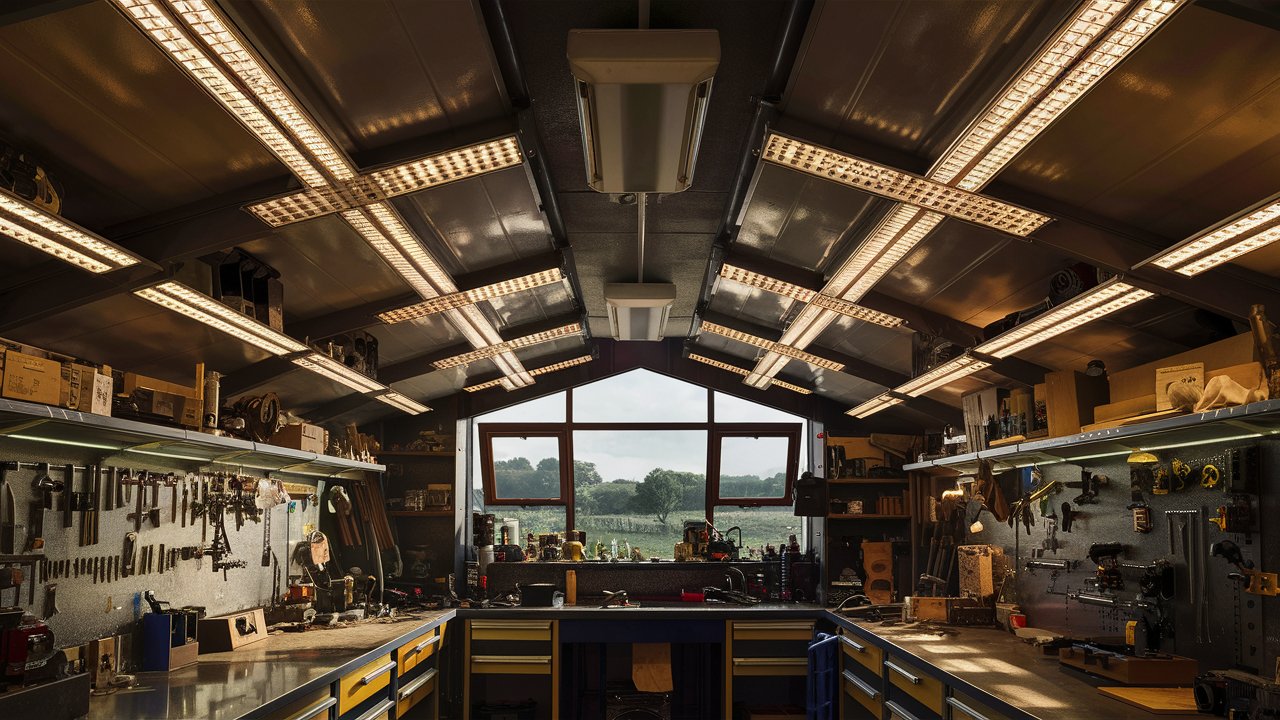
To further enhance your workshop's lighting, consider these supplemental options:
Clamp Lights
Portable and Versatile: These lights can be easily moved and positioned for detailed work, making them a handy addition to any workshop (HSE). Ideal for tasks that require flexibility in lighting.
Task Lighting
Precision Lighting: Focuses light on specific areas, reducing eye strain and improving visibility for intricate tasks (CIBSE). This is essential for workstations where precision is key.
Under Cabinet Lights
Direct Overhead Lighting: Perfect for illuminating workstations without adding bulk. These lights are mounted under cabinets or shelves, providing direct light exactly where it's needed (CNET).
By integrating these diverse lighting fixtures into your workshop, you can create a well-lit, efficient, and safe environment that enhances productivity and work quality. Whether you need broad illumination for large areas or focused light for detailed tasks, the right LED fixtures can make all the difference.
Planning to add recessed lighting to your workshop? Here’s a helpful guide.
Credit: The Honest Carpenter
Final Takeaway
Proper lighting in workshops is essential to minimise mistakes and enhance safety. Investing in LED workshop lighting boosts efficiency and provides excellent illumination, making it the ideal choice for any workspace. Combining LED lighting with targeted work lights creates a well-lit environment that supports productivity and safety.
By choosing the right lighting solutions, you can transform your workshop into a space where productivity thrives and safety is paramount. Consider exploring the wide range of Meteor Electrical products, including the most powerful LED lights that ensure your workshop is equipped with the best lighting solutions available.
FAQs: LED Workshop Lighting
1. What are the benefits of using LED lights in workshops?
LED lights offer numerous benefits for workshops, including:
- Energy Efficiency: They consume less energy, reducing electricity costs.
- Long Lifespan: LEDs can last up to 50,000 hours or more, minimising maintenance.
- Instant Brightness: They provide immediate full brightness without warm-up time.
- Durability: LED lights are robust and less prone to damage.
- Environmental Impact: They do not contain hazardous materials like mercury, making them safer for the environment.
2. How do LED lights compare to fluorescent lights in a workshop setting?
LED lights are generally more efficient and longer-lasting than fluorescent lights. While fluorescent bulbs are energy-efficient and provide even lighting, they contain mercury and can flicker, causing eye strain. LEDs do not have these drawbacks and offer better overall performance.
3. Can LED lights reduce my workshop’s energy costs?
Yes, LED lights are highly energy-efficient and can significantly reduce your workshop's energy costs. They use less electricity compared to traditional lighting options like incandescent and metal halide bulbs, leading to lower utility bills.
4. What types of LED lights are best for workshops?
Several types of LED lights are suitable for workshops:
- LED High Bay Lighting: Ideal for large areas with high ceilings.
- Workstation Lights: Provide focused lighting for specific tasks.
- Workshop Strip Lighting: Customizable and easy to install.
- LED Directional Channel Retrofit: Emit light at different angles for targeted lighting.
- LED Wraparound Lighting: Perfect for low ceilings.
5. Are LED lights safe to use in workshops?
Yes, LED lights are safe for workshops. They remain cool to the touch, reducing the risk of burns or fire hazards. Additionally, they do not contain harmful materials like mercury, making them a safer choice for both users and the environment.
6. How do I choose the right LED lights for my workshop?
When choosing LED lights for your workshop, consider the following factors:
- Ceiling Height: High bay lights are ideal for high ceilings, while wraparound lights work well for low ceilings.
- Task Requirements: Use workstation lights for focused tasks and strip lighting for broader areas.
- Energy Efficiency: Look for lights with high energy efficiency ratings.
- Durability: Choose robust fixtures that can withstand the workshop environment.
7. Can LED lights improve productivity in my workshop?
Yes, proper lighting is crucial for productivity. LED lights provide consistent, bright illumination, reducing eye strain and fatigue. This enhances visibility, which can lead to fewer mistakes and increased efficiency.
8. Are there any drawbacks to using LED lights in workshops?
The main drawback of LED lights is their higher initial cost compared to traditional bulbs. However, the long-term savings on energy and maintenance costs often outweigh this initial investment.
9. How do I install LED lights in my workshop?
Installation depends on the type of LED lights you choose. For high bay and wraparound lights, you may need professional installation. Strip lights and clamp lights are generally easier to install and can often be done without professional help. Always follow the manufacturer's instructions for installation.
By addressing these common questions, you can make a well-informed decision about incorporating LED lighting into your workshop, ensuring a safer, more efficient, and productive environment.

